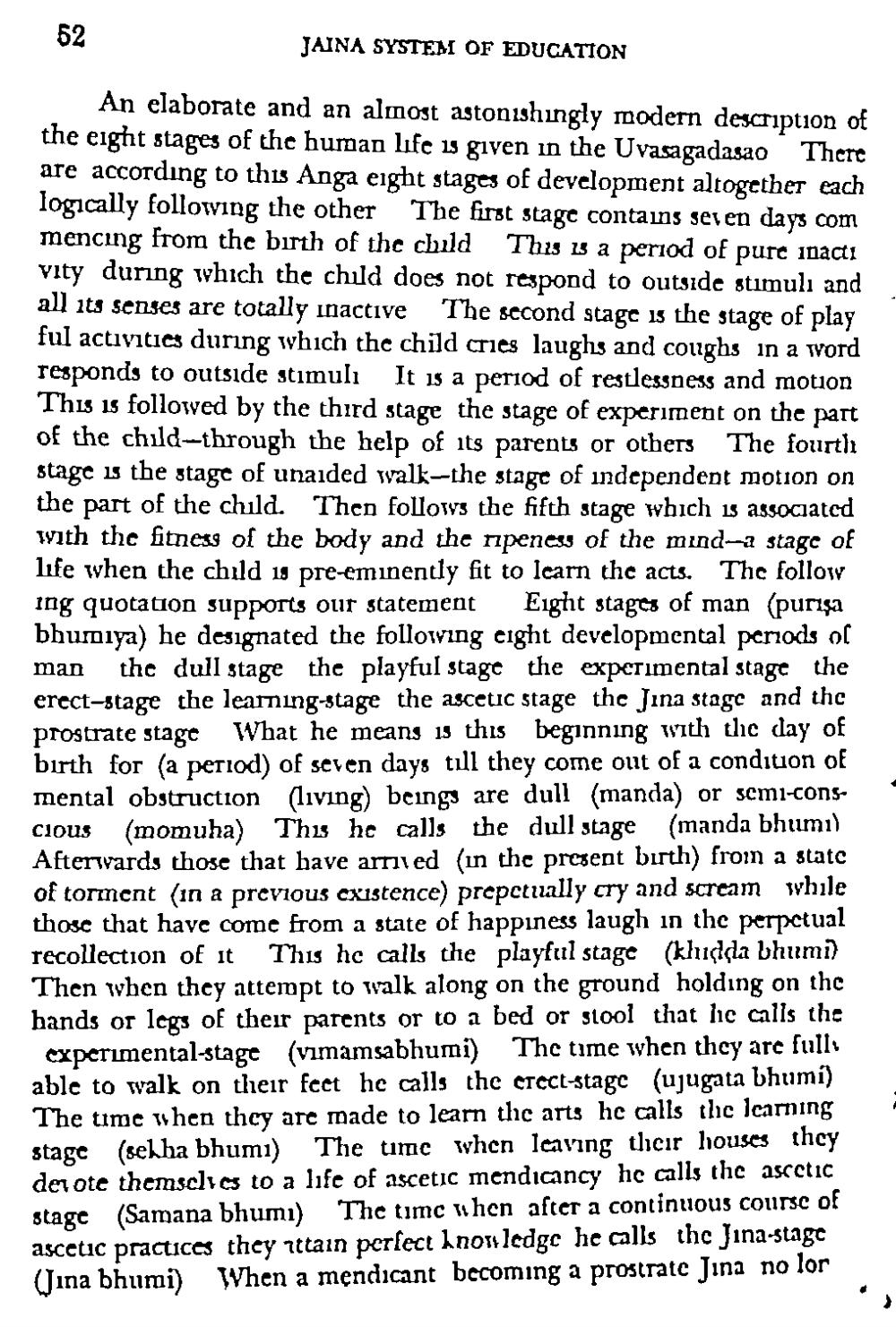________________
JAINA SYSTEM OF EDUCATION
An elaborate and an almost astonishingly modern description of the eight stages of the human life is given in the Uvasagadasao There are according to this Anga eight stages of development altogether each logically following the other The first stage contains seven days com mencing from the birth of the child This is a period of pure inacti vity during which the child does not respond to outside stimuli and all its senses are totally inactive The second stage is the stage of play ful activities during which the child cries laughs and coughs in a word responds to outside stimuli It is a period of restlessness and motion This is followed by the third stage the stage of experiment on the part of the child-through the help of its parents or others The fourth stage is the stage of unaided walk-the stage of independent motion on the part of the child. Then follows the fifth stage which is associated with the fitness of the body and the ripeness of the mid-a stage of life when the child 19 pre-eminently fit to learn the acts. The follow ing quotation supports our statement Eight stages of man (purışa bhumiya) he designated the following cight developmental periods of man the dull stage the playful stage the experimental stage the erect-stage the learning-stage the ascetic stage thc Jina stage and the prostrate stage What he means is thus beginning with tic day of birth for a period) of seven days till they come out of a condition of mental obstruction (living) beings are dull (manda) or semi-conscious (momuha) This he calls the dull stage (manda bhumi) Afterwards those that have arried (in the present birth) from a statc of torment (in a previous existence) prepctually cry and scream while those that have come from a state of happiness laugh in the perpetual recollection of it This he calls the playful stage (kludda bhumi) Then when they attempt to walk along on the ground holding on the hands or legs of their parents or to a bed or stool that lic calls the
experimental-stage (vimamsabhumi) The time when they are fulls able to walk on their feet he calls the crect-stage (ujugata bhumi) The time when they are made to learn the arts he calls the Icarning stage (sehha bhumi) The time when leaving thicir houses thcy der ote themschics to a life of ascetic mendicancy hc calls the ascetic stage (Samana bhumi) The timc then after a continuous course of ascetic practices they attain perfect anonledge he calls thc Jina-stage (Jina bhumi) When a mendicant becoming a prostrate Jina no lor




